The products of Ford-owned Lincoln have for years rivaled those of General Motors’ Cadillac Division in their exclusivity and luxury, yet the company was conceived for an entirely different purpose: to build Liberty aero engines during WWI. Cadillac’s Henry Leland was the man responsible, his tenure with the company he founded having ended in 1917 following a disagreement with General Motors boss William C Durant. Leland, then 74 years old, named his new company after the President he had voted for back in 1864, but swiftly found himself overtaken by events. The Armistice of November 1918 left Leland with a big headache - what to do with his huge factory and a 6,000 person workforce. Given his decades of experience and stature within the automobile industry, there could only be one solution: turn the factory over to car production. Leland’s first Lincoln cars just took too long to come to market and by the time they did they looked dated and the post-war recession didn’t help sales take off. By early 1922 the other board members had had enough and, despite Leland’s objections, put the company up for sale. The buyer was none other than Henry Ford, whose acquisition of Lincoln enabled him to contest the upper reaches of the automobile market while the ubiquitous Model T continued to dominate at the other extreme. Under Edsel Ford’s company presidency which began in June 1922 Lincoln car production rapidly increased. Despite former Leland’s fears to the contrary, quality improved under the new management and under Edsel Ford’s direction the Lincoln evolved into a beautiful car, aided by the recruitment of some of America’s finest coachbuilders including Brunn, Dietrich, Holbrook, Judd, Le Baron and Locke. By 1928 the V8 Lincoln engine had been enlarged from 357.8 to 384.8cu in (6.3 litres) and for 1931 was heavily revised with five main bearings while incorporating a host of other improvements - including the first American use of a two-barrel, down-draught carburetor - that raised maximum power from 90 to 120bhp. Lincoln’s up-rated motor went into an entirely new car - the Model K - built on a lengthened (145”) wheelbase chassis. Lower and sleeker than hitherto, the new Lincoln incorporated numerous other styling changes including a longer hood, peaked radiator and shallow, bowl-shaped headlights. For 1932 Lincoln’s V8 continued as the Model KA on a shorter (136”) wheelbase, while the 145 inch wheelbase K designation was reserved for a bigger brother, the KB, powered by their all new and massive 447.9 cubic inch V12-engine. Two inch diameter valve stems and a seven main bearing crank ensured the KB’s motor was as robust as it was powerful, qualities which serve it as well today as they did in the 1930s. The basic looks of the new car were also enhanced a little by its slightly narrower radiator shell, which was itself distinguished by a blue emblem. Retrospectively that very first year of the KB has come to be most coveted of all, symbolizing as its does the best aspects of the decade and in the most refined aesthetic manner. This KB was restored in the 1980s and it is a restoration that has stood the tests of time, externally its paintwork is still tidy and its fawn cloth interior presents cleanly. The period scheme of blue over black fenders is off-set well by whitewalls. Engine compartment is clean and proper and the car starts with ease. On the road it display all the attributes that make the KB so popular among tourists. The light steering, excellent brakes and powerful engine combine to make what many consider the best driving car of the American Classic period. With Fall around the corner a cozy closed car like this would make an ideal New England foliage tourer. Representing good value for a car of such intrinsic quality, it would provide a perfect long distance touring car for a variety of events, including those of the Classic Car Club of America for which it qualifies as a Full Classic.
The products of Ford-owned Lincoln have for years rivaled those of General Motors’ Cadillac Division in their exclusivity and luxury, yet the company was conceived for an entirely different purpose: to build Liberty aero engines during WWI. Cadillac’s Henry Leland was the man responsible, his tenure with the company he founded having ended in 1917 following a disagreement with General Motors boss William C Durant. Leland, then 74 years old, named his new company after the President he had voted for back in 1864, but swiftly found himself overtaken by events. The Armistice of November 1918 left Leland with a big headache - what to do with his huge factory and a 6,000 person workforce. Given his decades of experience and stature within the automobile industry, there could only be one solution: turn the factory over to car production. Leland’s first Lincoln cars just took too long to come to market and by the time they did they looked dated and the post-war recession didn’t help sales take off. By early 1922 the other board members had had enough and, despite Leland’s objections, put the company up for sale. The buyer was none other than Henry Ford, whose acquisition of Lincoln enabled him to contest the upper reaches of the automobile market while the ubiquitous Model T continued to dominate at the other extreme. Under Edsel Ford’s company presidency which began in June 1922 Lincoln car production rapidly increased. Despite former Leland’s fears to the contrary, quality improved under the new management and under Edsel Ford’s direction the Lincoln evolved into a beautiful car, aided by the recruitment of some of America’s finest coachbuilders including Brunn, Dietrich, Holbrook, Judd, Le Baron and Locke. By 1928 the V8 Lincoln engine had been enlarged from 357.8 to 384.8cu in (6.3 litres) and for 1931 was heavily revised with five main bearings while incorporating a host of other improvements - including the first American use of a two-barrel, down-draught carburetor - that raised maximum power from 90 to 120bhp. Lincoln’s up-rated motor went into an entirely new car - the Model K - built on a lengthened (145”) wheelbase chassis. Lower and sleeker than hitherto, the new Lincoln incorporated numerous other styling changes including a longer hood, peaked radiator and shallow, bowl-shaped headlights. For 1932 Lincoln’s V8 continued as the Model KA on a shorter (136”) wheelbase, while the 145 inch wheelbase K designation was reserved for a bigger brother, the KB, powered by their all new and massive 447.9 cubic inch V12-engine. Two inch diameter valve stems and a seven main bearing crank ensured the KB’s motor was as robust as it was powerful, qualities which serve it as well today as they did in the 1930s. The basic looks of the new car were also enhanced a little by its slightly narrower radiator shell, which was itself distinguished by a blue emblem. Retrospectively that very first year of the KB has come to be most coveted of all, symbolizing as its does the best aspects of the decade and in the most refined aesthetic manner. This KB was restored in the 1980s and it is a restoration that has stood the tests of time, externally its paintwork is still tidy and its fawn cloth interior presents cleanly. The period scheme of blue over black fenders is off-set well by whitewalls. Engine compartment is clean and proper and the car starts with ease. On the road it display all the attributes that make the KB so popular among tourists. The light steering, excellent brakes and powerful engine combine to make what many consider the best driving car of the American Classic period. With Fall around the corner a cozy closed car like this would make an ideal New England foliage tourer. Representing good value for a car of such intrinsic quality, it would provide a perfect long distance touring car for a variety of events, including those of the Classic Car Club of America for which it qualifies as a Full Classic.
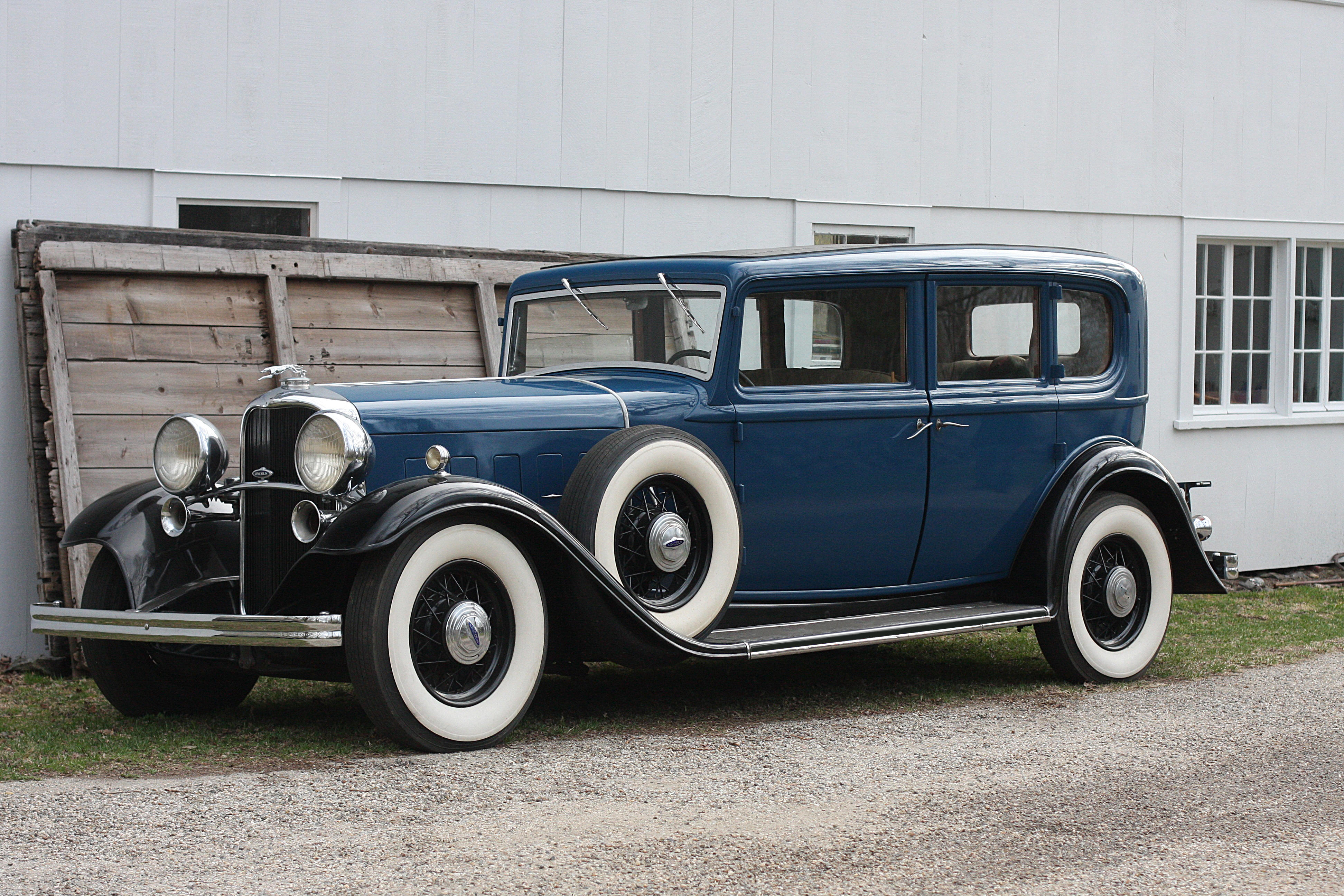

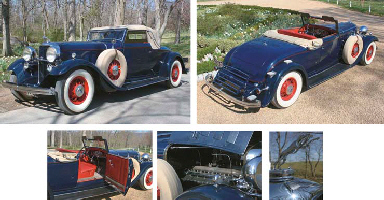

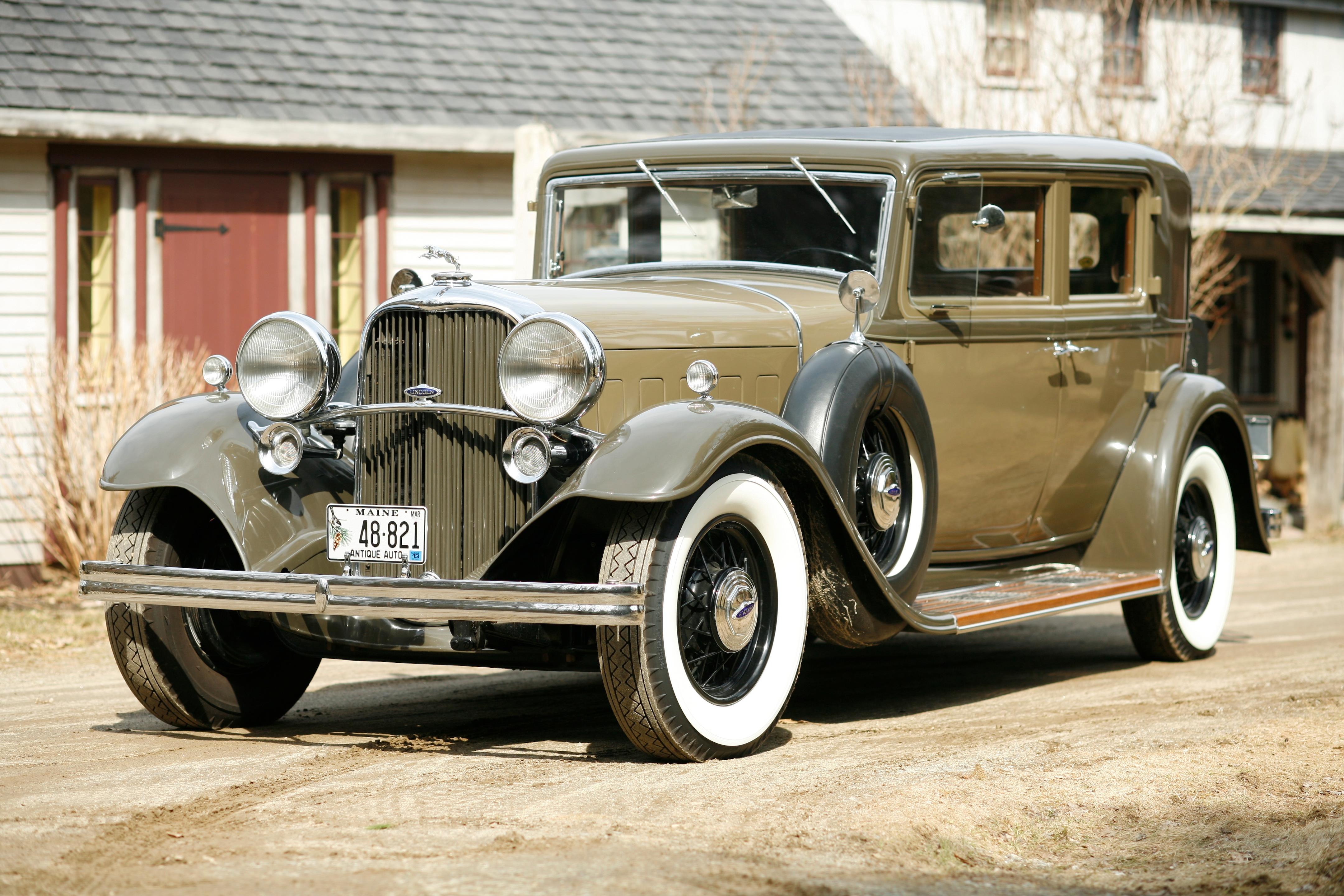

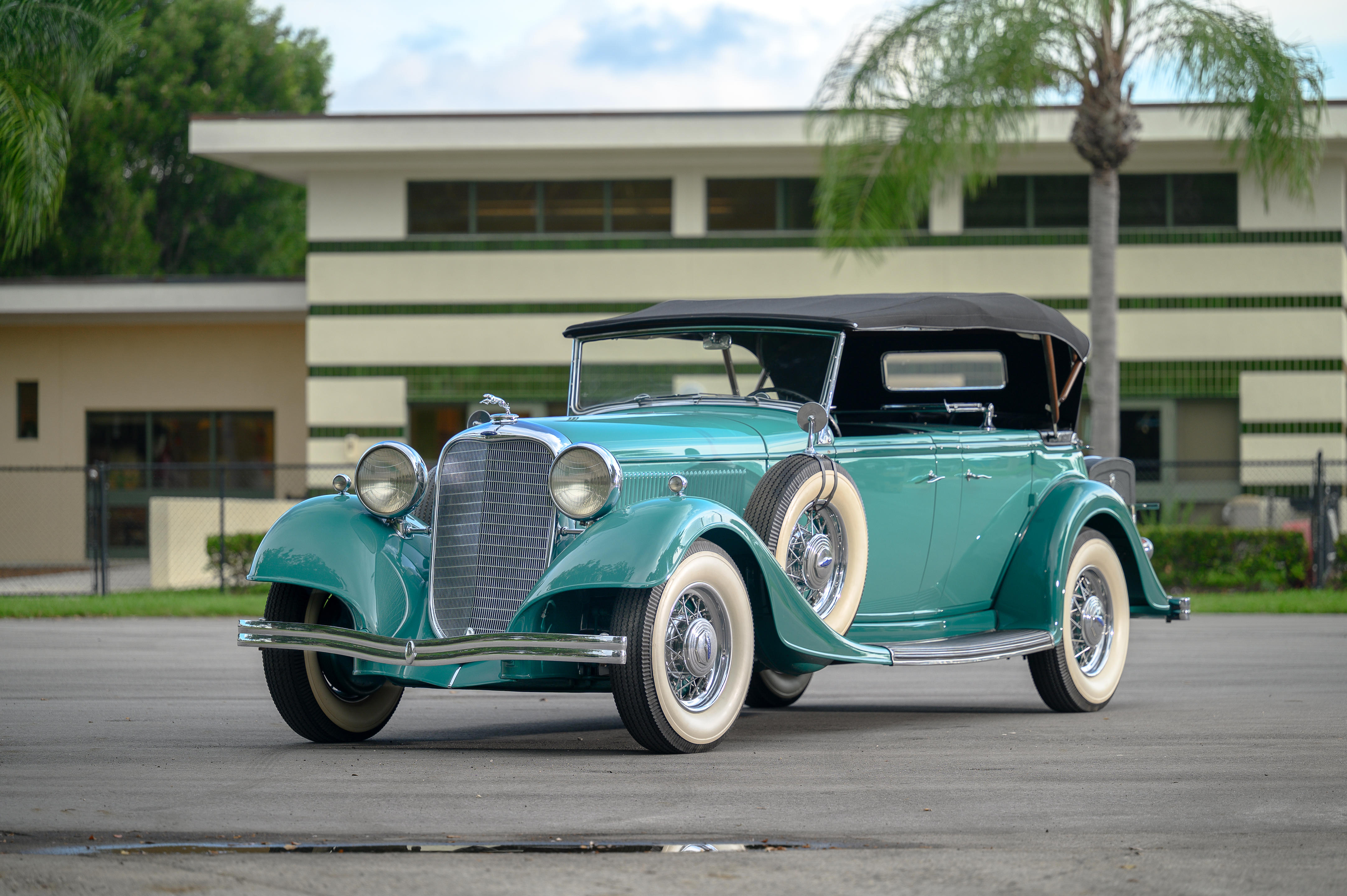
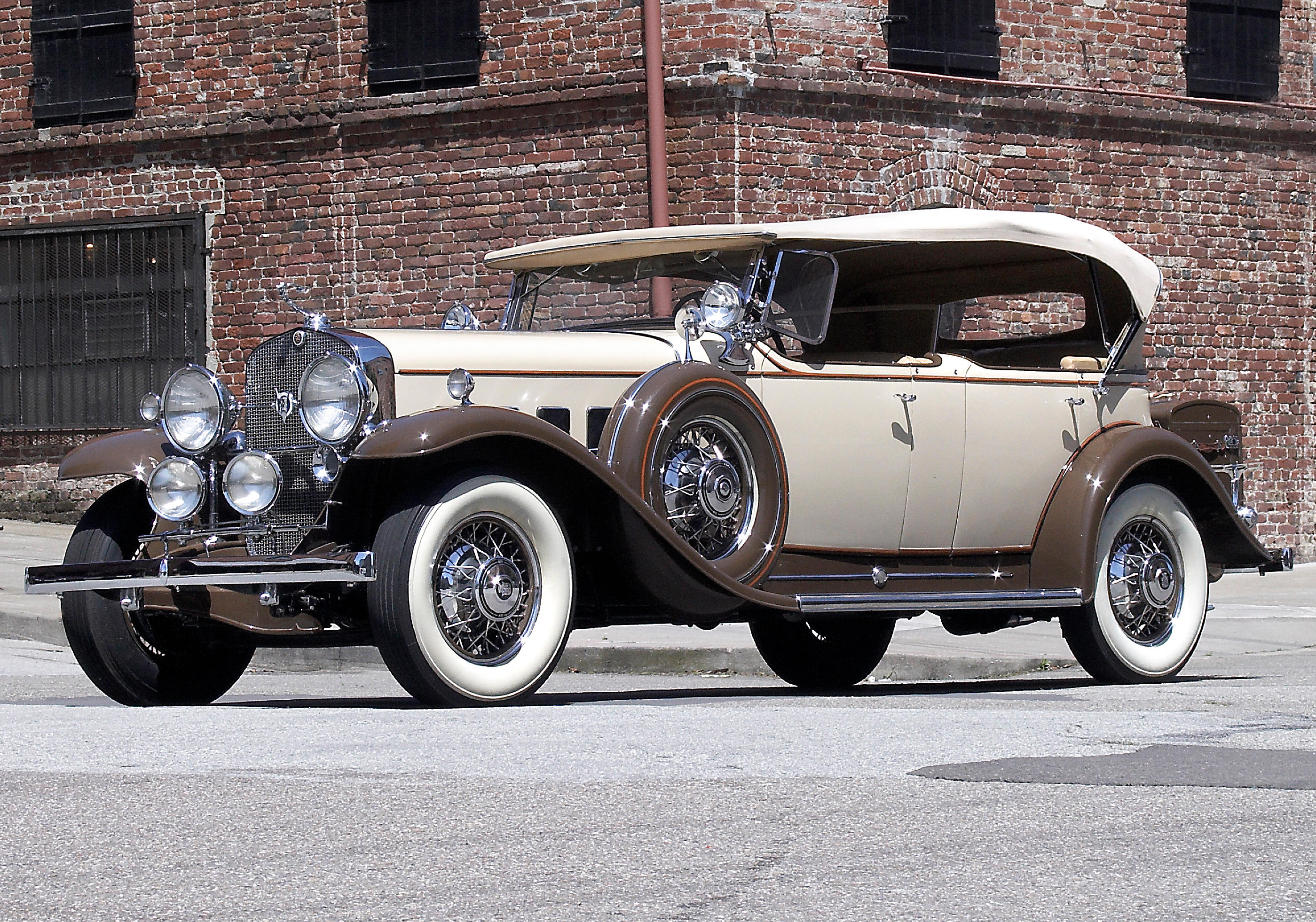


Try LotSearch and its premium features for 7 days - without any costs!
Be notified automatically about new items in upcoming auctions.
Create an alert